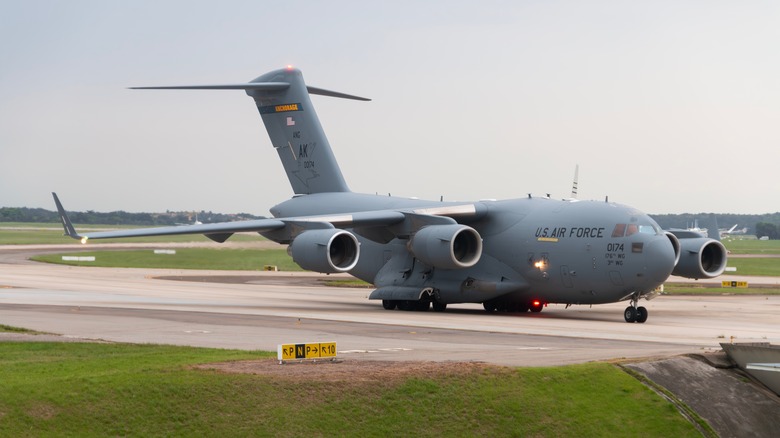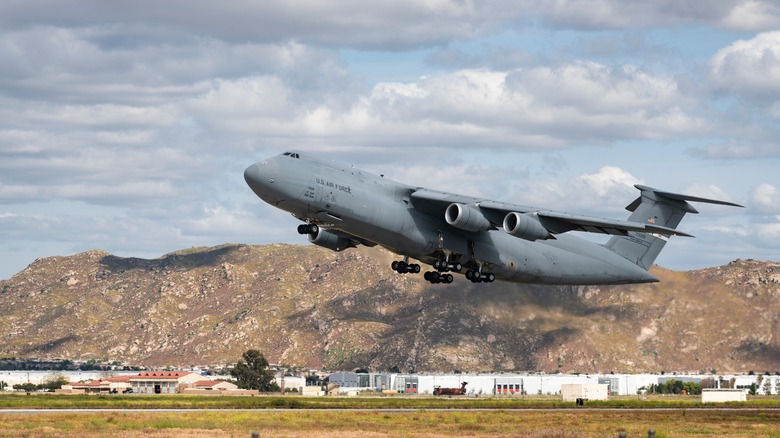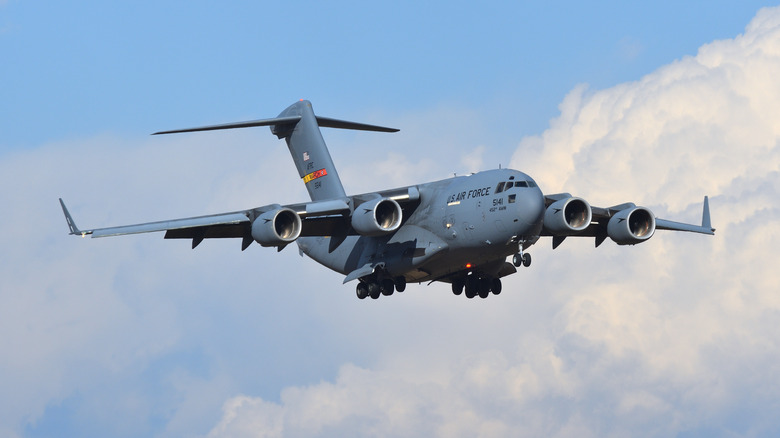The US Military's C-17 And C-5 Cargo Planes Are In Store For An All-In-One Replacement
As enormous a military budget as the United States has, money is never infinite. It's being allocated in a thousand different directions, just like a household budget, but on a larger scale. As such, the most practical and efficient use of that money should be made at any given time. The issue is that the most advanced and expensive military vehicle will eventually require extensive refurbishment or replacement with a new model. The C-17 and C-5 cargo planes, for example, are two venerable and expensive aircraft that have had a vital role in the U.S. Air Force. The $340 million price tag of the famed C-17 Globemaster, the legendary Moose, is nothing to scoff at.
In September 2025, General John Lamontagne of Air Mobility Command discussed the logistics of replacing these two aircraft when the time comes. Air & Space Forces Magazine quotes him as saying, "We'd like to have a plan in place, so when the service life starts to erode on the C-17, whether it's wings, engines, or more, we've got a competition already going." This makes it quite clear that the force isn't keen to retire either aircraft voluntarily, but has accepted the inevitability.
The general recalled the old C-141 from the Gulf War, noting that it was clear when that aircraft was ready for a replacement. One platform that can perform the role of both transports would be ideal. The concept of the Next Generation Airlifter is taking shape, with hopes that the finished aircraft that will be able to do just that.
The potential replacement for these storied cargo planes
The research, development, and maintenance of a replacement, over the course of what will hopefully be another long service life, will be hefty indeed. Doubly so, if two different aircraft were needed. The War Zone quotes General Lamontagne as explaining that this is the reason why "we won't get a C-5 replacement and a C-17 replacement. There'll be one airplane that does strategic airlift." Designers can focus on that effort with the Next Generation Airlifter rather than dividing teams, saving time and resources. The U.S. military is thinking proactively here, so it's not caught by surprise when the aircrafts' service life come to an end.
The formidable C-5 Galaxy, in particular, has served since June 1970, when South Carolina's 437th Airlift Wing received the first one. 55 years later, battlefield conditions and potential threats to these vital airlift aircraft have changed considerably. For this reason, General Lamontagne went on to say that some of the biggest priorities for a potential new aircraft would be increased survivability: "...we want agility, we want speed, we want to be able to operate in a higher threat environment."
With the essential equipment and personnel that these aircraft are typically charged with transporting, they can be priority targets for unfriendly forces. As a result, sophisticated defenses will be essential for their replacement, as will advanced maneuverability. The C-5 Super Galaxy may be the most massive military jet in America's arsenal, but it can still be vulnerable.
The Next Generation Airlifter is still a long way away
Phasing out an aircraft and replacing it with a new fleet requires a long process of careful work. As such, neither the C-17 nor the C-5 are going to disappear from service overnight. They are expected to continue to serve into the 2040s, demonstrating that there's nothing in the near future poised to replace them. The Next Generation Airlifter concept, then, is estimated to enter service in about 20 years, and the plans that the U.S. military has for it are lofty.
To ensure that the aircraft is as versatile as possible, and can deliver its crucial cargo and personnel as close as practical to where they're needed, it will inevitably have to approach closer to opposition territory. Part of determining this, of course, is also appreciating that two decades' worth of development will also dramatically increase the threat other nations could pose. One of the most notable dangers is long-range anti-aircraft weaponry, which simultaneously makes an efficient means of refueling in flight crucial.
These capabilities could result in an aircraft that serves as long as its predecessors, or even longer. In order to do so, though, it will need to be able to contend with dangers such as great swarms of drones. The effectiveness of such a strategy has been seen definitively in the war in Ukraine, in which Ukraine is trying all manner of creative means to hunt down Russian drones. The NGAL will almost certainly have to contend with such technology when it comes online.


